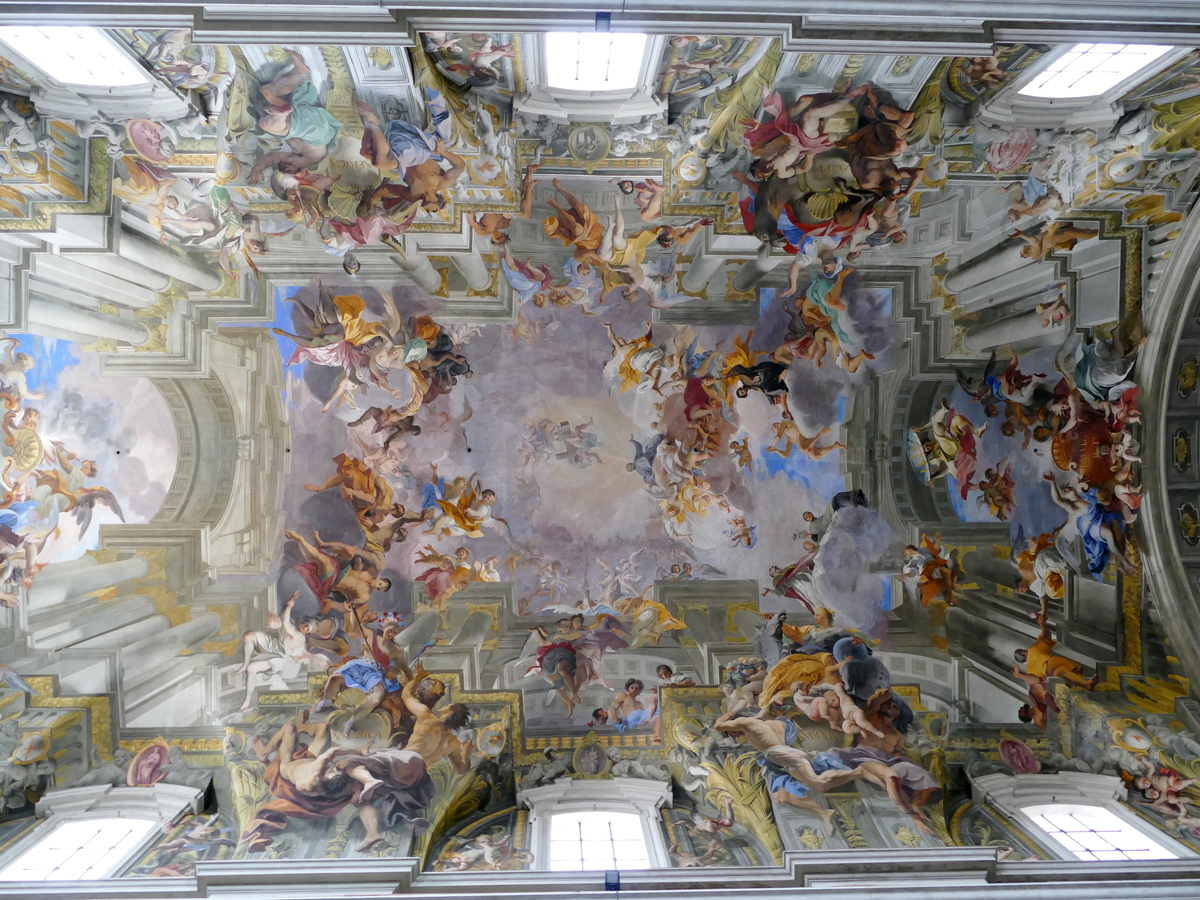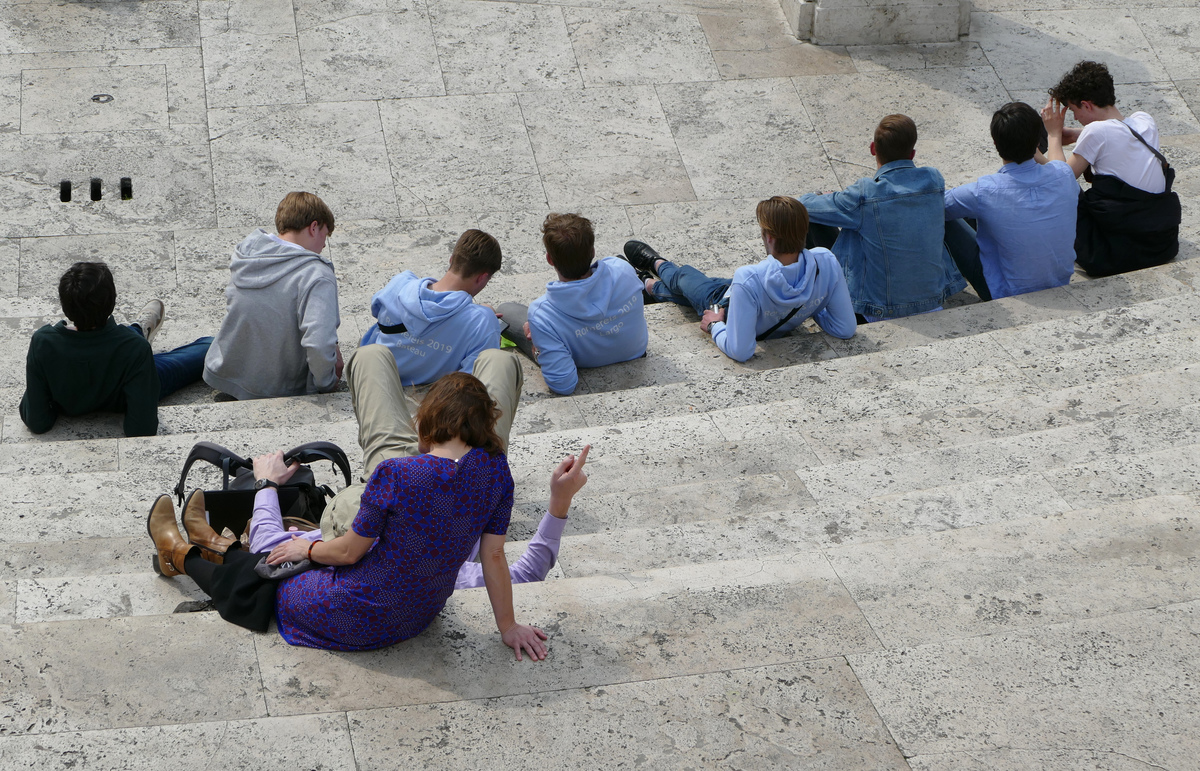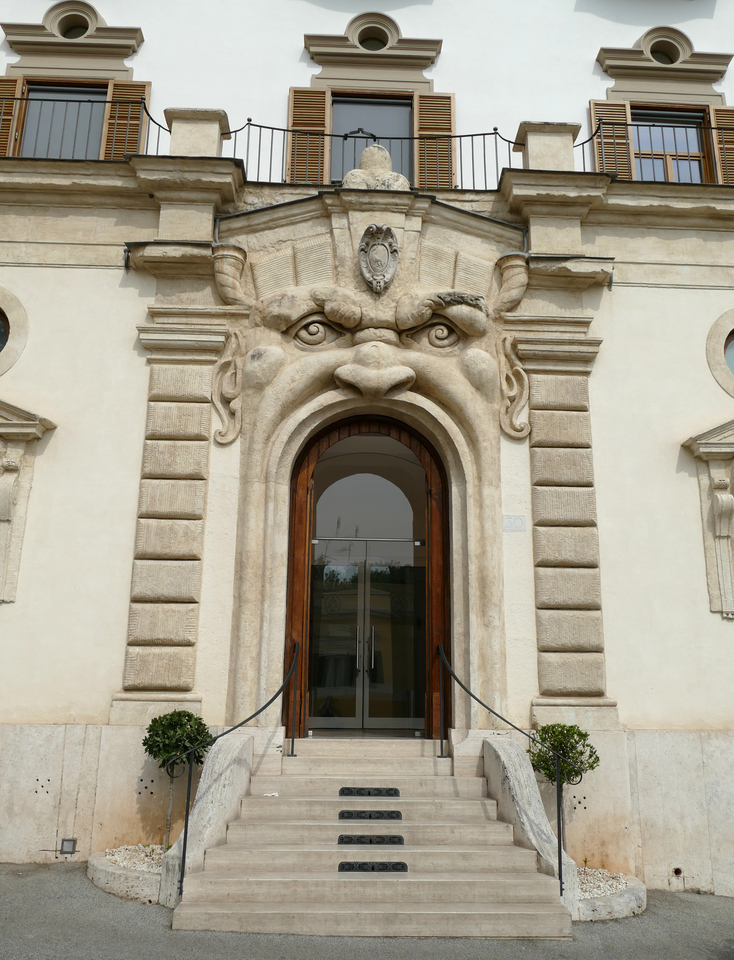Something to remember about Rome: it developed as it needed to over the course of 2500 years. This helps explain how sidewalks are an afterthought - although it doesn't entirely explain why they get parked on. Pedestrians just walk in the street when that happens, which of course causes other problems.
Yesterday when I spent more time in the Centro Storico (historical centre) I saw a number of priests (identifiable by their cassocks) with backpacks who were playing tourist just as I was. One or two of them were navigating with their cellphones, like the rest of the tourists. Somewhat less pleasing to the eye were the occasional pair of military policemen, one of whom was always carrying a machine gun. They seem friendly enough, but ... they're carrying a MACHINE GUN. Is it a Canadian thing to be made uncomfortable by that?
I'm beset by minor technological woes: my phone can't survive a full day of navigating me about the city, so I'm carrying a large (11000 mAh) external battery and a charging cord. And yesterday my camera developed a particularly troublesome behaviour: both screens (eye-piece and back) will intermittently just switch off - and while they're off, photos can't be taken (although the power light is still on). I suspect this may have to do with the back screen hinge and/or the eye-detector on the eye piece, so I've stopped using the back screen entirely and it was better behaved today. It's a very expensive camera and I'm still at the beginning of the trip, it's a bit disconcerting. So I'm also carrying my spare camera, another weight I don't love carrying with me (although it's much smaller).
I started the day at Palazzo Quirinale, or more correctly around the corner at their "Info Point" where they sell tickets. People who know me will be amused to hear that I did look at booking them ahead ... and found the security on their bank's website unacceptable. So I went in person to book. And there are certain advantages to a long stay: when he said "the next available tour is next Tuesday," I just said "okay."
The Trevi Fountain was nearby, so I headed there. I loved it last time and I still love it this time, but ... what a zoo. It's a beautiful, beautiful, super-tacky triumph of sculpture and water, and I love it. I spent half an hour in the surrounding tourist brawl, perched on a railing watching photo-op after photo-op tossing coins in the water. The story goes that if you do that, you'll return to Rome. I got back without tossing a coin (so there, nyah-nyah, etc.). And after watching several people tossing coins blindly over their shoulders from the second tier, I wondered "what does it mean if you clonk another tourist with your coin instead of getting it into the fountain?" Too cynical? I was saddened by how hard it was to enjoy the thing we were nominally there to see ...
On the walk to the Pantheon I came across Chiesa di Sant'Ignazio di Loyola - I went in as a respite from the cross-town tourist flow, and rediscovered possibly my second favourite tromp l'oeil church ceiling in the city. As you look up, you find columns extending from the top of the church walls up to the heavens, into the clouds and the angels. It's a ridiculous and wonderful vision.
photo: Chiesa di Sant'Ignazio di Loyola

The Pantheon fascinated me last time, and before my departure I was ranting at my father about it. The thing is 2500 years old, it significantly predates Christianity. It was originally dedicated to the old gods, but was later consecrated as a Christian church. It's a 43 metre unsupported dome (although I found it unclear if the dome was built 2500 years ago or a mere 2000 years ago ...) - it would be hard to replicate today with modern technology if you attempted to use the same building materials. It's an achievement, and beautiful in its simplicity. And what I don't think a lot of people realize who have only seen pictures - that "oculus" at the top of the dome isn't a window or anything - it's a hole. A large hole that lets in an immense amount of light. And presumably pouring down rain at other times: there are drain holes in the stone floor. I love the place and spent a good 15-20 minutes just looking at the dome and walls.
I made no plan yesterday or today, which would probably be clear to anyone who mapped out my described path - particularly today. I think I walked 15 km, and Rome's not really all that big (at least not the parts tourists visit). My next stop was the Spanish Steps - kind of getting all the "classics" out of the way, and with it the worst of the tourist press (well ... I still have to go to St. Peters and the Vatican Museum). Neither the Steps nor their nominal target at the top is a favourite of mine. The church is Église de la Trinité-des-Monts ... you can guess by the name it's French, which throws into question the naming of the steps ...
photo: Lingering on the Spanish Steps

Just down the road from the church is something I wanted to see on my last trip, but it was behind scaffolding then: Via Gregoriana, 30. The door is inside a bloody enormous carved mouth in a stone face - and the two windows on either side are similarly decorated. Wonderfully weird.
photo: Via Gregoriana, 30

Then it was off to Isola Tiberna, a small island in the Tiber River. That didn't offer much, so I crossed the river to Trastevere. Rough Guide says "Trastevere" means literally "across the Tiber," and it used to be a working class neighbourhood. It's been scaling up, and, while it looks like Rome and acts like Rome, it somehow feels noticeably different. I couldn't tell you how. Slower paced, I suppose. Once there, I revisited two favourite churches from my previous trip, although both were more for a specific sculpture than the church itself. Santa Cecilia has the sculpture of Saint Cecilia with her head almost chopped off (mildly gruesome but actually quite a lovely sculpture), and San Francesco a Ripa has "The Blessed Ludovica Albertoni" by Bernini. It's perhaps not his best sculpture, but she's in the throws of realizing divine ecstasy ... and it looks an awful lot more earthy than divine.
Then, because I was in Trastavere and I had talked a couple days ago with the friend I traveled here with last time, I returned to the pizzeria that was possibly the only restaurant we both clearly remembered from our previous trip - "Ai Marmi." According to the Rough Guide (who aren't entirely reliable), they're nicknamed "the mortuary" because of the stark interior and the marble slab tables. They're still on the recommended list, and they have good reviews on Google Maps too. I went in at 1835, about five minutes after they opened. By 1900 they were pretty much packed - and the conversation seemed to be in almost any language except Italian. And then I remembered that no self-respecting Roman eats dinner that early (or so I've heard ...) - more power to the restaurant, pack in the tourists early and maybe the locals later?
I had a pizza with mozzarella, "speck" (a type of prosciutto), and gorgonzola. Thin crust, beautifully cooked, tasted mostly like gorgonzola (works for me!). Really good. I watched the staff and wondered if any of them had changed since a decade ago. There's the comedian who mans the register, and the grumpy guy who tops the pizzas and shepherds them through the oven. There's the speedy, brusque, and surprisingly friendly waiter. Or maybe they've changed, but they take on their assigned roles ...